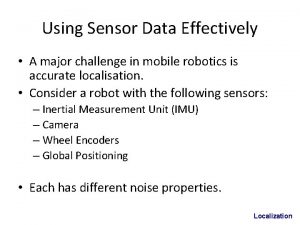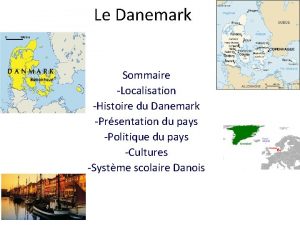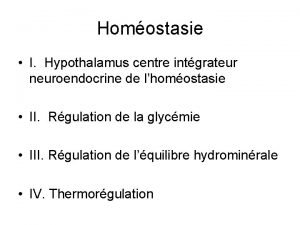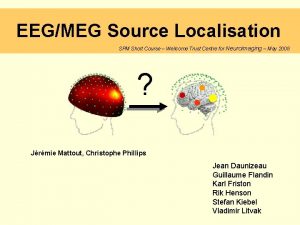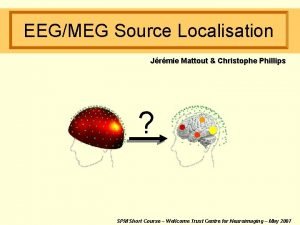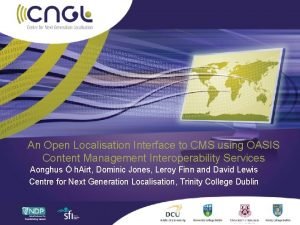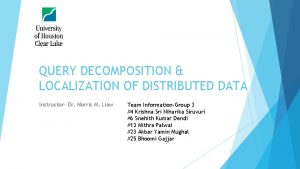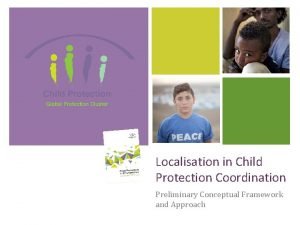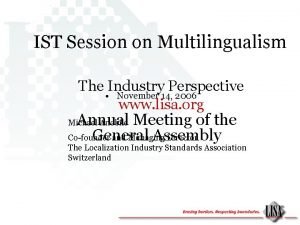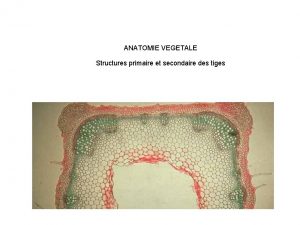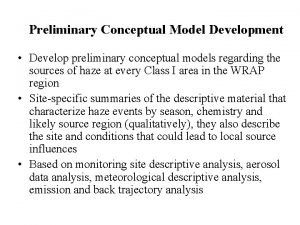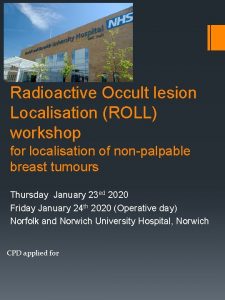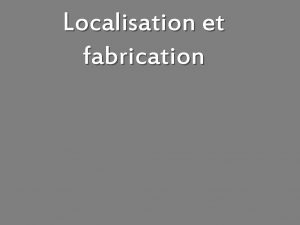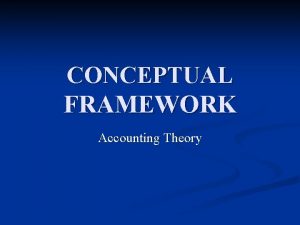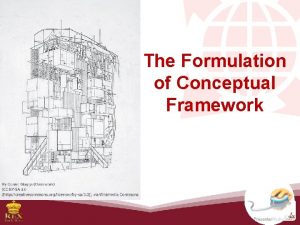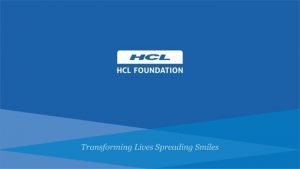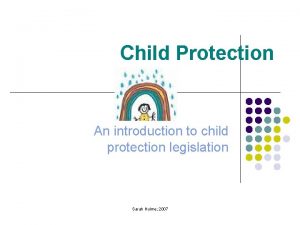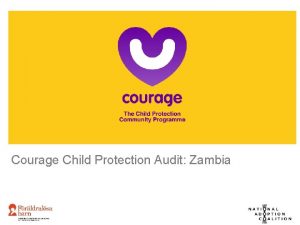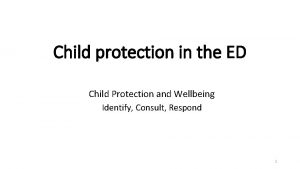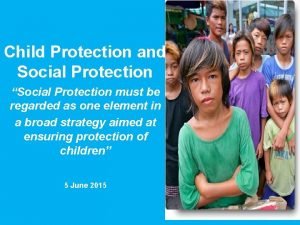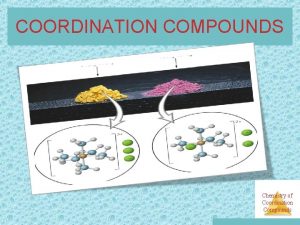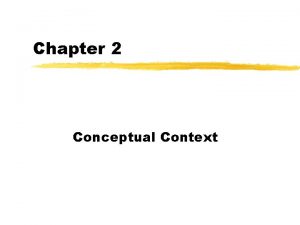Localisation in Child Protection Coordination Preliminary Conceptual Framework






















- Slides: 22

Localisation in Child Protection Coordination Preliminary Conceptual Framework and Approach

SESSION 1: INTRODUCTION

What does “localisation” mean to you? (Write you answer on the cards provided and hand to the facilitator)

Break into groups of 2 -3. 1. Introduce yourselves 2. Discuss – who do you consider to be a local actor?

“as local as possible, as international as necessary. ” For more information on the World Humanitarian Summit: https: //www. worldhumanitariansummit. org/sites/default/files/m edia/WHS%20 Commitment%20 to%20 Action_8 September 2016. pdf For more information on the Grand Bargain: http: //www. agendaforhumanity. org/initiatives/3861


SESSION 2: CONCEPTUAL FRAMEWORK

The role of the coordination system in localisation • There is an obligation to promote localisation (WHS/Grand Bargain) • More importantly, localisation can help us achieve our coordination objectives – increased coverage and quality. • The coordination system can support agencies and networks to: • • • amplify localisation efforts take successful pilots to scale Influence internal structural changes

Conceptual Framework Governance & Decision Making Influence and Participation Funding Partnerships Institutional Capacity

Governance and Decision. Making

Influence and Participation “… the door to cluster meetings is open, while the power dynamics in them are skewed towards INGOs and UN…”

Partnership - Cluster Child Protection Education Cluster Combined National Equality 80% 70% 60% 50% 40% 30% 20% 10% 0% Responsibility Results Oriented Combined International National International Equality 60% 50% 40% 30% Complementarity Responsibility 20% Complementarity 10% 0% Transparency Results Oriented Principles of Partnership: Equality, Transparency, Results-Oriented Approach, Responsibility and Complementarity Transparency

Partnership (Principle: Responsibility)

Funding Protection Cluster Funding Asks 14, 200, 129 8, 069, 262 23% International Partners National Partners 77% 3, 876, 547 3, 658, 108 2, 526, 074 1, 013, 242 69% INGO 57% 26% NNGO Requirements Funding UN % Funded

at d/ Se pa r pa ni e m co ed n ild re Ch Targeted se Reached % Vi s. A im ct t ce an ss ist Su pp or 46% 650 1, 540 1, 293 2, 794 7, 221 8, 599 222, 471 682, 267 1, 600, 000 n io en t em ag an M 200, 000 te ct Pr o Ca t 400, 000 ac po r l. S up 33% Un ia 600, 000 oc 561, 920 800, 000 os n io at Ed uc 1, 000 yc h sk Ri 1, 684, 104 1, 800, 000 Ps M in e Institutional Capacity 84% 90% 80% 1, 400, 000 70% 1, 200, 000 60% 42% 50% 33% 40% 30% 20% 10% 0%

Supporting local agencies for Lead/Co-Lead positions or putting leadership transition strategies in place Including local actors in Strategic Advisory Groups (SAG) and HCT Modelling and monitoring a culture of principled partnerships in Clusters Constantly reviewing service delivery and funding arrangements (such as localisation dashboards) with the SAG and Ao. R members and using recommendations to inform strategy and response. Ensure that Cluster membership accurately reflects the diversity of the humanitarian community – including diaspora, private sector, academia etc Translating key communications into local languages Facilitate onsite coaching and mentoring support from international partners Share good practices and promote these in future response plans Adapt the 5 Ws to allow for disaggregation by implementing and funding agency Produce and share dashboards that provide analyses disaggregated by local/international implementing agencies Continuously identify and advocate for local actors to be supported for service provision and capacity building opportunities • • Ensuring the HNO incorporates the views and data from local actors. This could also include academia, diaspora, private sector, in addition to civil society Ensuring HNO includes both needs of affected populations and the institutional capacity needs of local actors Prioritising service delivery by local actors HRP and cluster strategies, where possible Developing a sectoral institutional capacity building strategy as part of the HRP Disaggregate cluster indicators by local/international Promoting partnerships that draw on coaching and mentoring approaches, rather than subgranting Including explicit references to institutional capacity building outputs (e. g reduced risk ratings) in project sheets • • • Supporting local actors to contribute to FTS tracking Prioritising approved local actors’ project sheets in funding rounds (e. g. pooled funds) Advocate for and include investments for institutional capacity building for local partners in pooled funds

SESSION 3: CURRENT SITUATION & FUTURE VISION

• Break into 5 groups • Each group gathers around one of the “stations”. You will find a continuum: National International. • As a group, debate where along the continuum you believe best satisfies the phrase “as local as possible, as international as necessary. ”

SESSION 4: ACTION PLANNING

• Return to your original group and “station”. • List the actions or activities that the Coordination Group could undertake to achieve the desired localization • When instructed, move to the next “station” and add any additional ideas you have to the existing list. • At the end, the whole group will select the top 2 -3 priorities.

SESSION 5: MONITORING

• Return to your original group and “station”. • Review the top 2 -3 priorities selected in the last session and answer the following: • • • How can the activities be integrated into the existing or upcoming HRP Identify an indicator for monitoring each one. How could the Cluster monitor progress?
 Optical isomers of mabcdef
Optical isomers of mabcdef How to explain conceptual framework
How to explain conceptual framework Conceptual research examples
Conceptual research examples Theoretical framework
Theoretical framework Theoretical framework example
Theoretical framework example Localisation sensor data
Localisation sensor data Tissu nodal localisation
Tissu nodal localisation Neurologie
Neurologie Localisation
Localisation Localisation danemark
Localisation danemark Cur 1
Cur 1 Homostasie
Homostasie Localisation
Localisation Christophe phillips
Christophe phillips Localisation relative
Localisation relative Cms localisation
Cms localisation Localization of distributed data
Localization of distributed data Ecg localisation of mi
Ecg localisation of mi Localisation
Localisation Localisation gps
Localisation gps Localization industry standards association
Localization industry standards association Choler
Choler Vertical
Vertical





